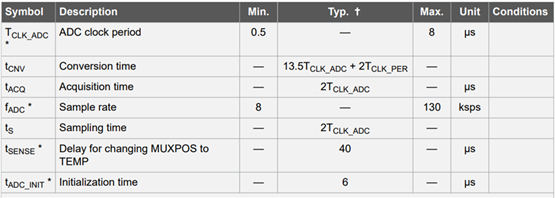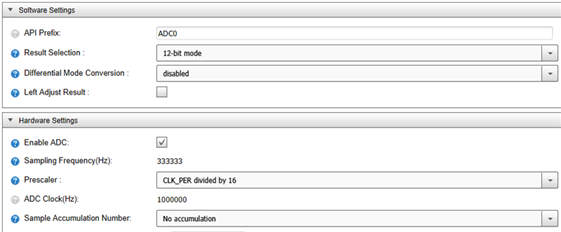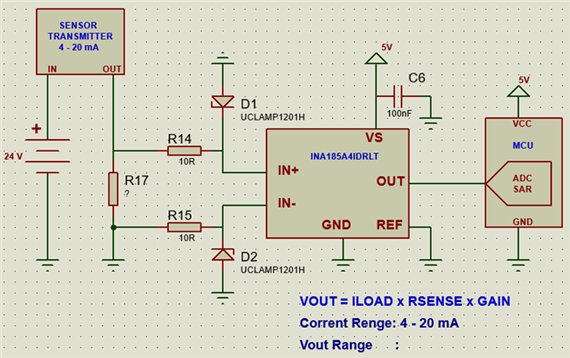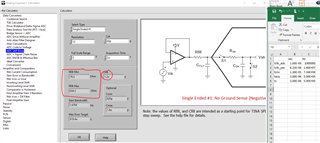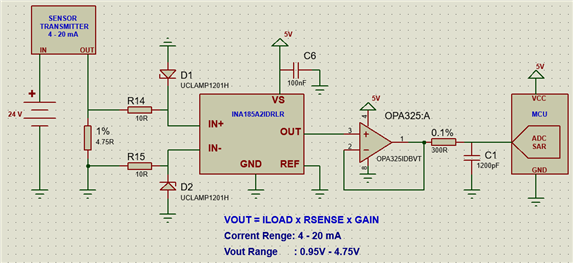Other Parts Discussed in Thread: INA185, INA191, INA180, INA293, INA281, INA199, OPA320, OPA325
Hello dears,
We are trying to develop a receiver that allows reading 4 – 20mA current from industrial transmitters and converting it to voltage to be processed by the ADC of a Microcontroller. I am attaching the schematic diagram, I need to know if it is correct or if you could recommend any parts for our application.
I appreciate your help.




